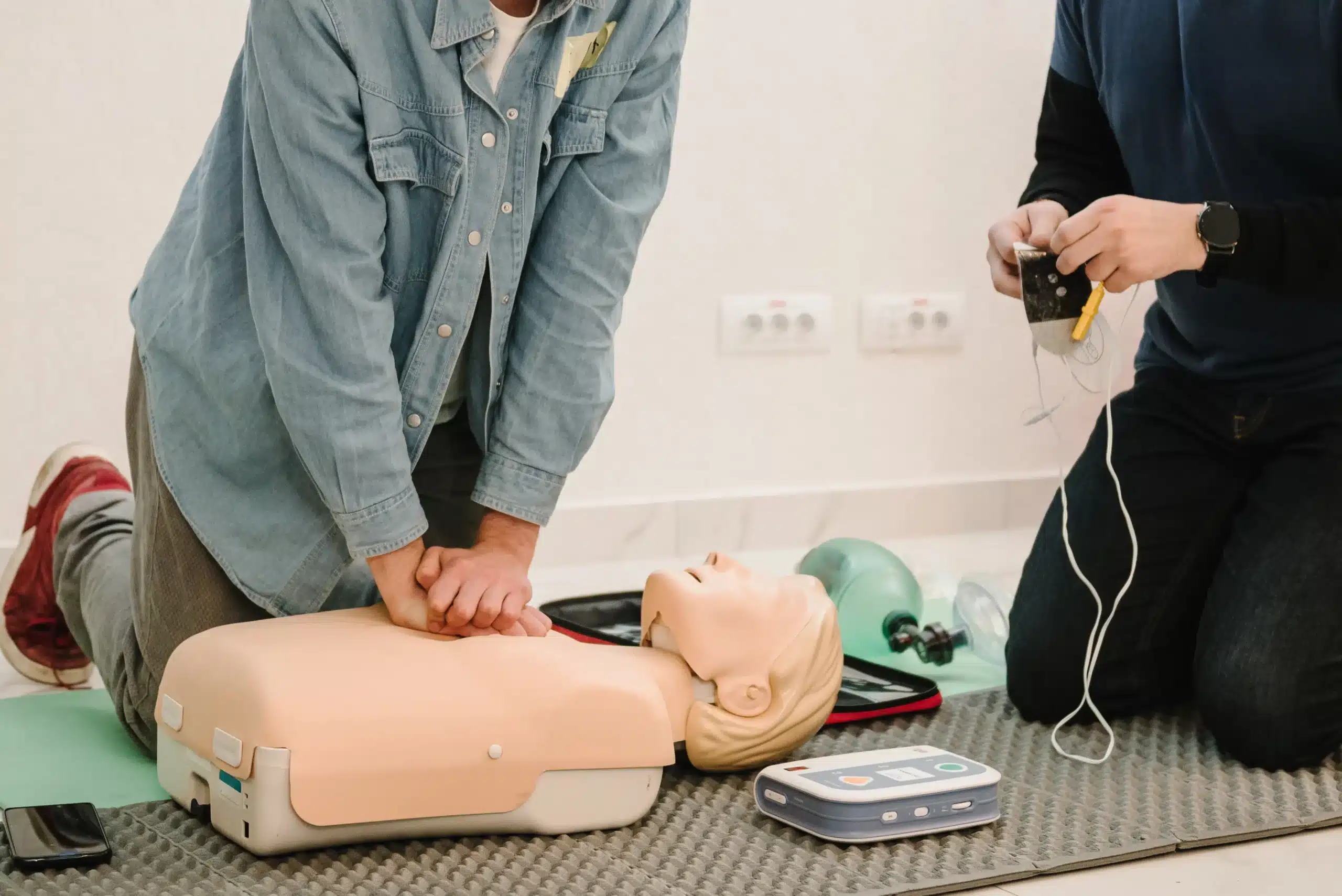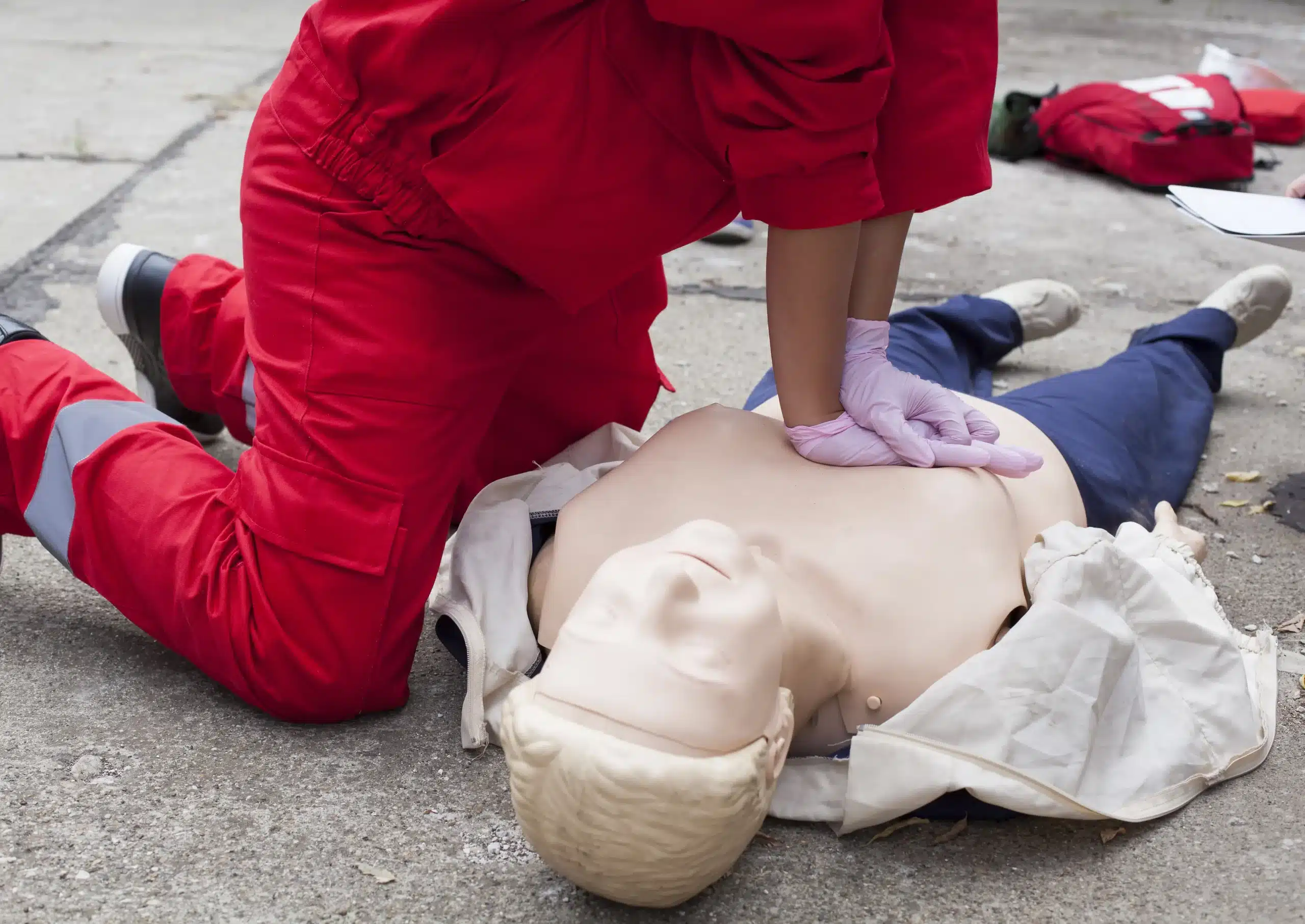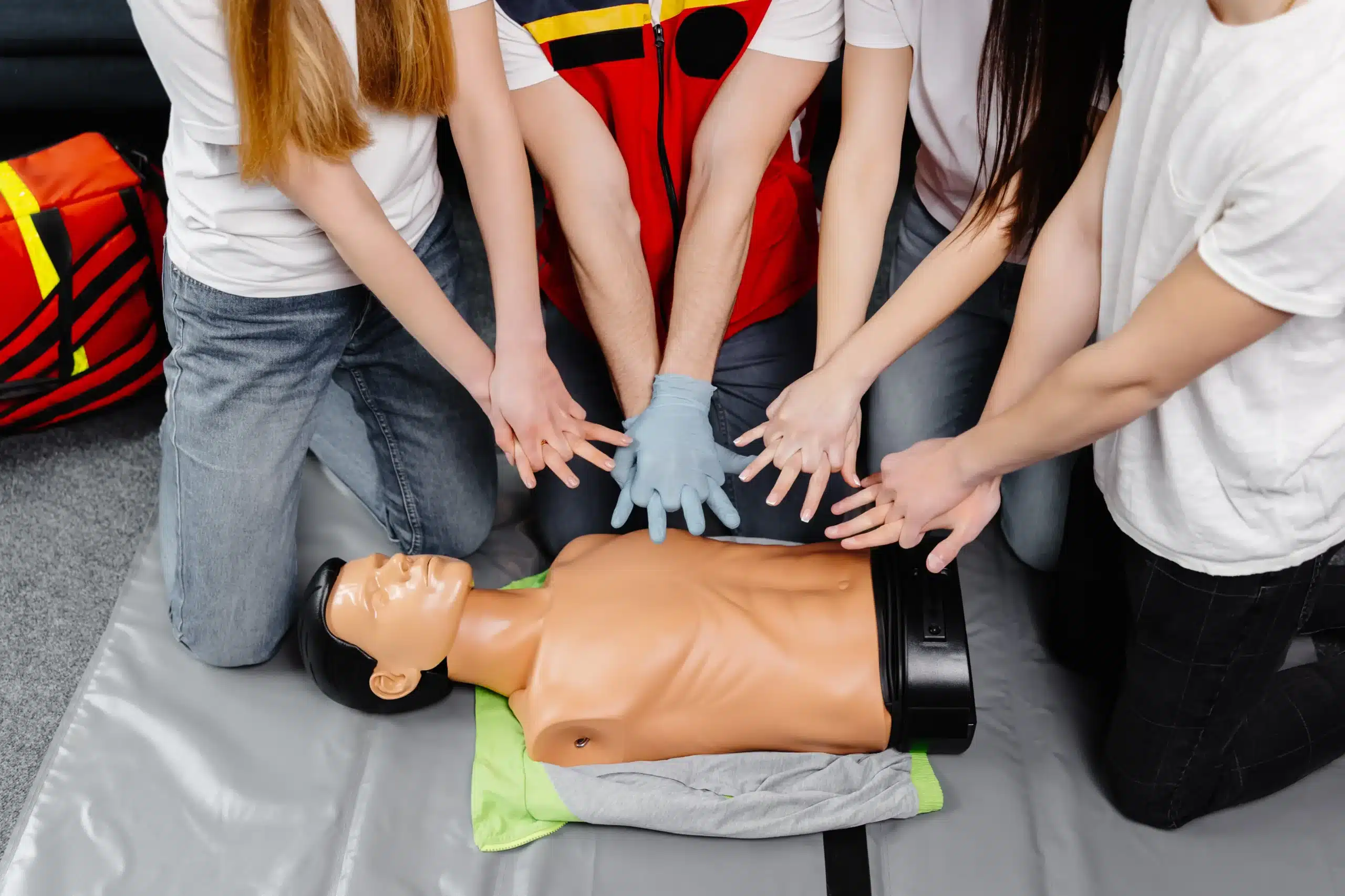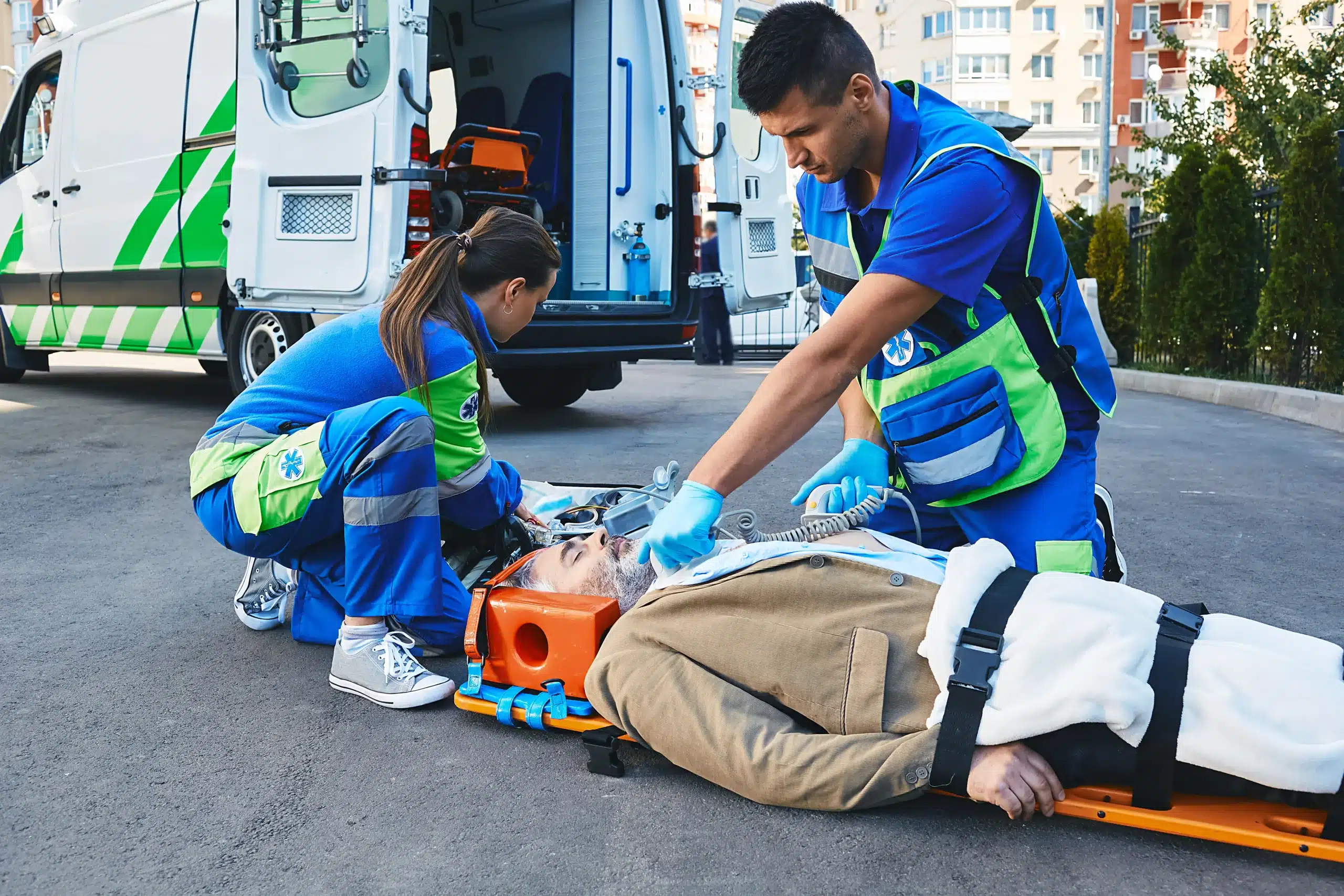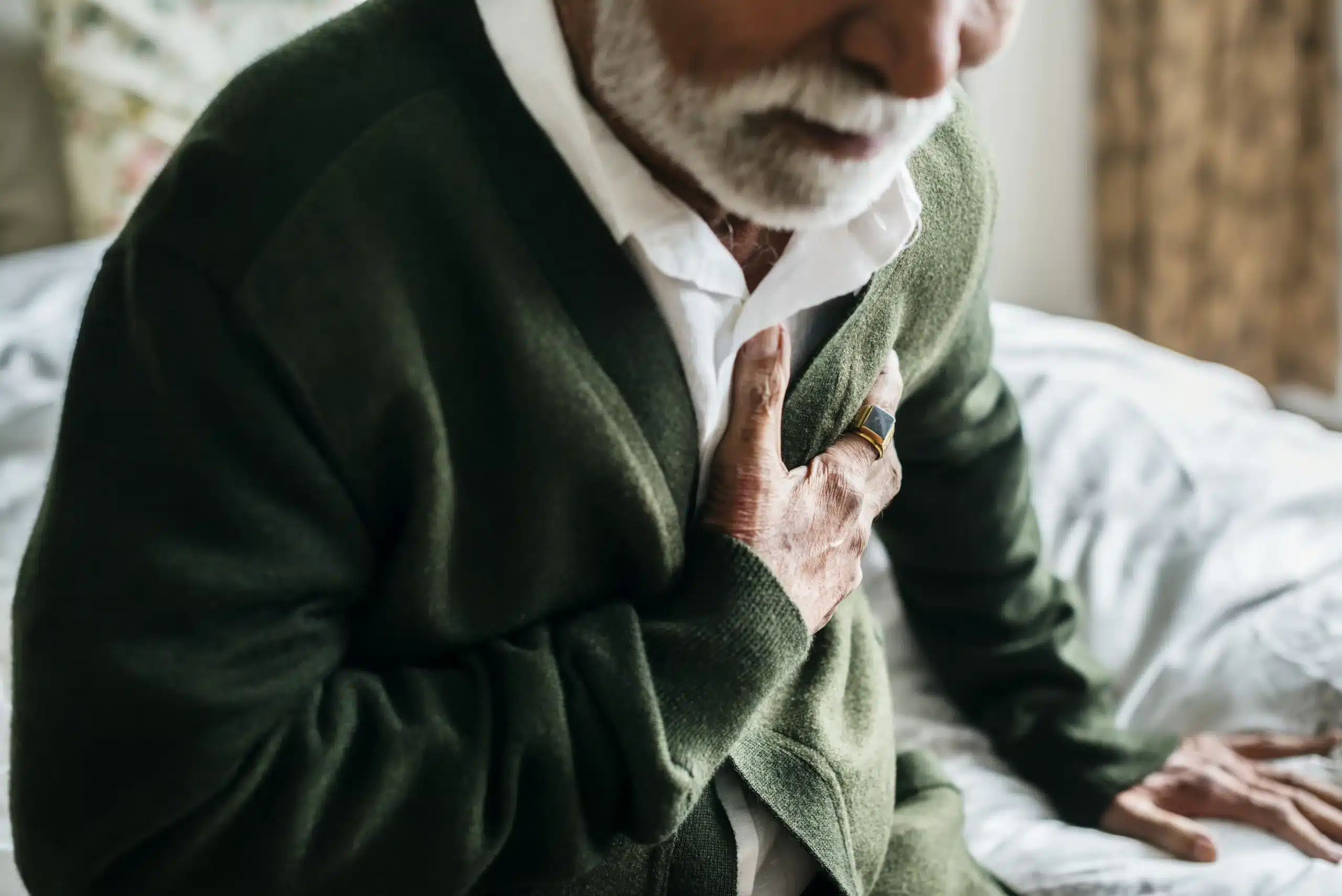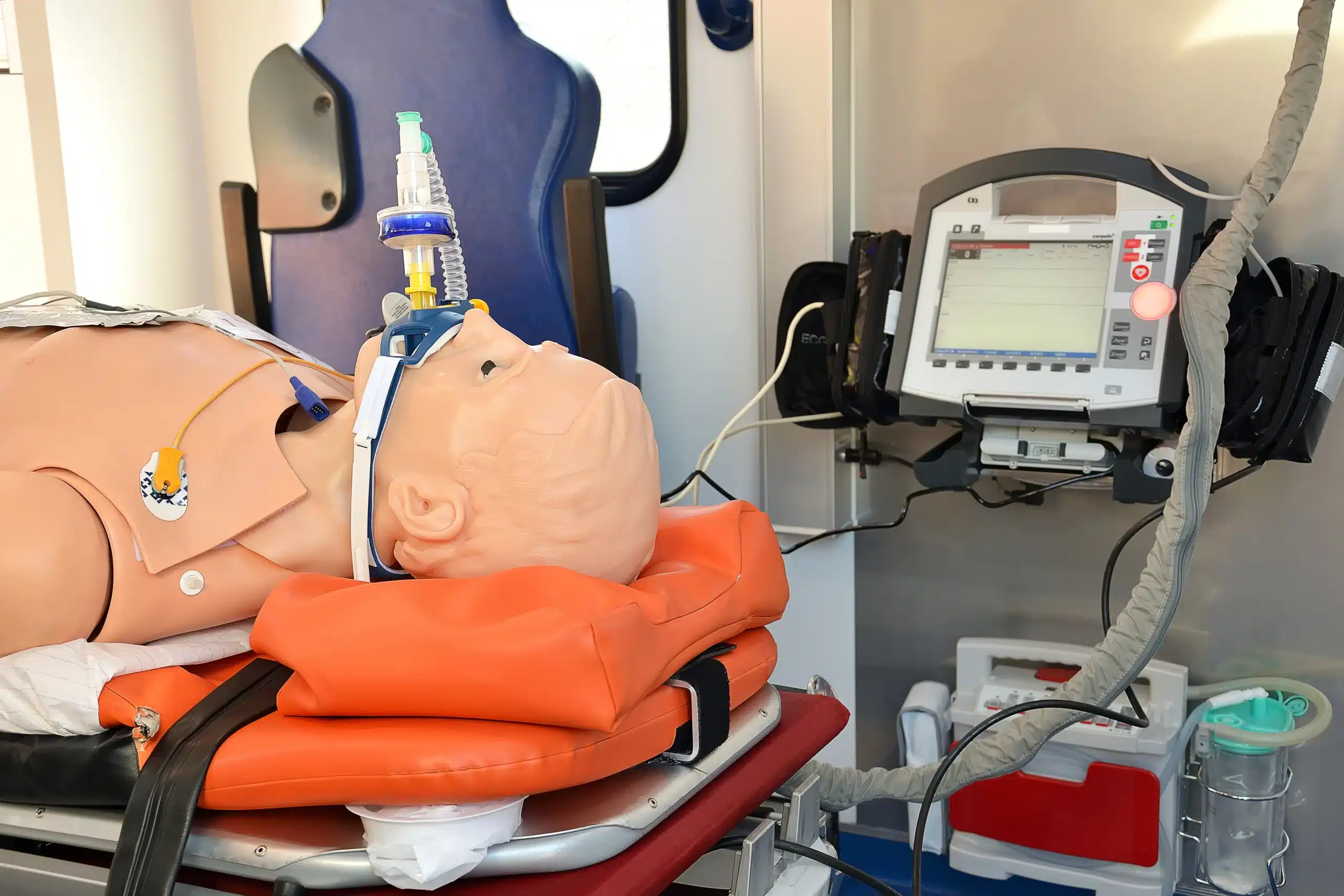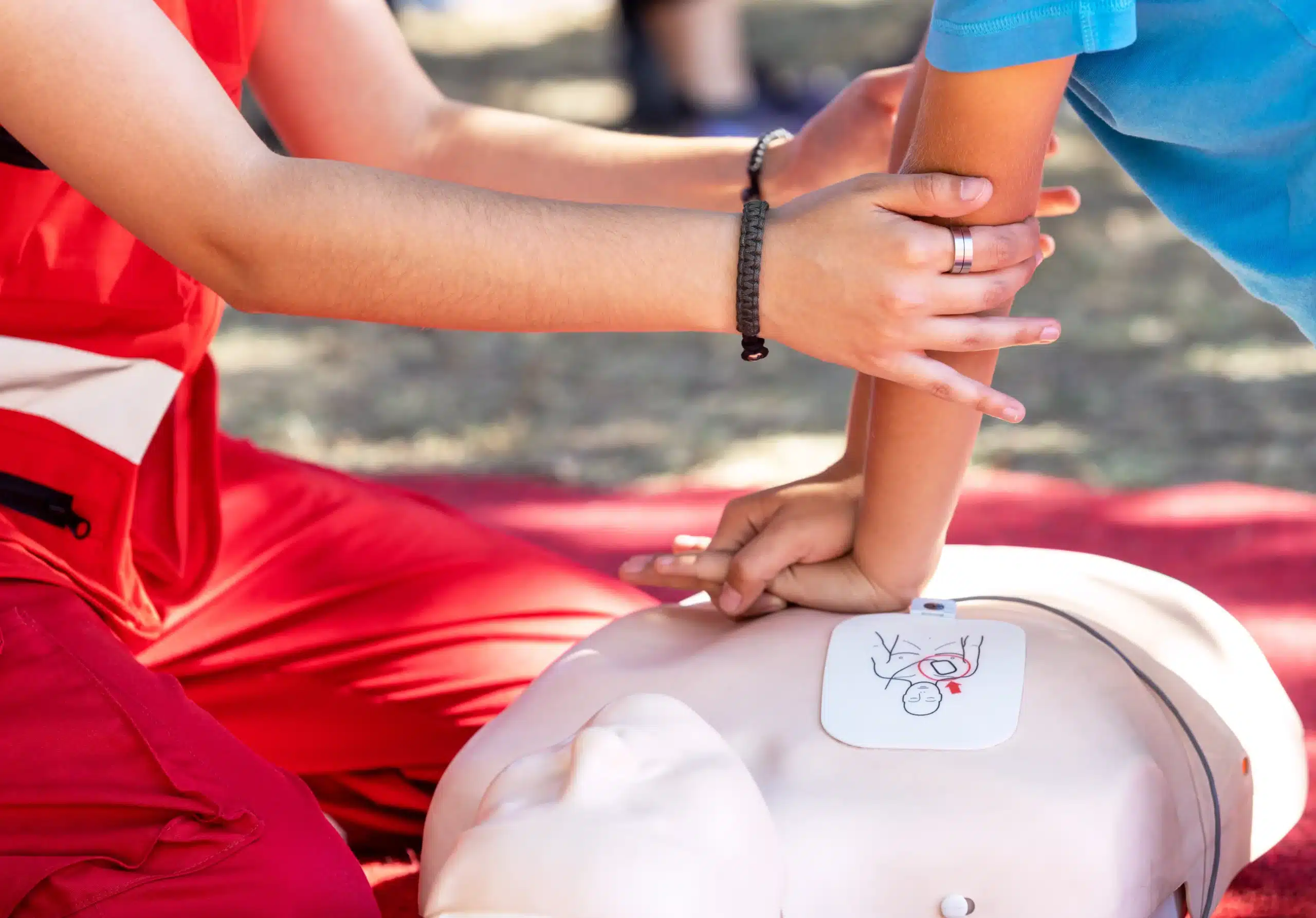Emergencies can happen anytime, anywhere. Being equipped with life-saving skills like CPR can make all the difference. If you’re in Tracy and looking for CPR courses, this guide is for you. We’ll break down the different CPR certifications, explore various course formats (in-person, online, and blended learning), discuss the importance of instructor expertise, and help you find CPR courses in Tracy that fit your needs. We’ll also cover the costs of CPR training and the immense value of these skills. Let’s get started!
Key Takeaways
- CPR Certification is Essential: Equipping yourself with life-saving CPR skills through a reputable provider like the American Heart Association or American Red Cross is crucial, regardless of your profession or background. Select a course that aligns with your specific needs.
- Choose the Right Course Format: CPR courses offer flexible options, including in-person, blended learning, and online formats. Consider cost, location, and instructor qualifications to find the best fit for your schedule and learning style.
- Maintain Your Skills: Regular practice is key to maintaining CPR proficiency. Stay up-to-date with your certification and pursue refresher courses to ensure you’re always prepared to respond confidently in an emergency.
What is CPR?
CPR, or cardiopulmonary resuscitation, is a lifesaving technique used when someone’s breathing or heartbeat has stopped. This can happen due to a heart attack, near drowning, or other medical emergencies. CPR involves chest compressions, sometimes combined with rescue breaths, to manually circulate blood and oxygen to the brain and other vital organs. Learning CPR empowers you to provide immediate assistance in these critical situations, potentially bridging the gap until professional medical help arrives. It’s a vital link in the chain of survival, increasing the chances of a positive outcome. The American Heart Association offers excellent resources on CPR and its importance.
CPR is incredibly important because when the heart stops beating, the lack of oxygenated blood can cause irreversible brain damage within minutes. By performing CPR, you can maintain a flow of oxygenated blood, dramatically improving the odds of survival and minimizing potential long-term complications. Even without an AED (automated external defibrillator), effective CPR can make a significant difference. Avive AED highlights compelling reasons why learning CPR is essential. It’s a skill that can truly empower you to save a life. Residents of Northern California can explore training options through this comprehensive CPR class directory.
CPR Course Options
Knowing which CPR class is right for you can feel overwhelming. This guide breaks down the different CPR certifications available at Tracy CPR Classes, so you can choose the best fit. We offer courses for everyone from healthcare providers and professional rescuers to concerned parents and community members. Our Tracy location serves Stockton, Tracy, and Lodi, CA.
Basic Life Support (BLS)
The BLS course provides healthcare professionals, first responders, and other designated rescuers with the skills to respond to life-threatening emergencies. The curriculum emphasizes high-quality chest compressions, rescue breathing, and AED use. BLS certification is often a job requirement for many healthcare roles.
Advanced Cardiovascular Life Support (ACLS)
ACLS training goes a step further than BLS, covering advanced interventions for emergencies like cardiac arrest, stroke, and respiratory failure. This course is designed for medical professionals, including physicians, nurses, paramedics, and respiratory therapists, who manage these emergencies. ACLS emphasizes teamwork and effective communication in critical situations.
Pediatric Advanced Life Support (PALS)
Specifically designed for healthcare providers who treat infants and children, the PALS course covers the specialized skills needed to respond to pediatric emergencies. From assessment and stabilization to effective treatment strategies, PALS training equips providers with the knowledge and confidence to deliver the best possible care.
First Aid & CPR
This combined First Aid and CPR course offers comprehensive training for various emergencies. You’ll learn CPR techniques for adults, children, and infants, plus how to manage injuries like cuts, burns, and fractures. This course is a great option for anyone who wants to be prepared for everyday emergencies—parents, caregivers, teachers, and community members.
Certification & Recognition
Choosing the right CPR certification is essential. Let’s explore key organizations and what their certifications mean to help you choose the best course.
American Heart Association Certification
The American Heart Association (AHA) sets the standard for high-quality CPR training and resuscitation education. Completing an AHA-certified course, like those at Tracy CPR Classes, earns you a certification card valid for two years. This widely accepted certification shows your commitment to maintaining up-to-date life-saving skills. Tracy CPR Classes offers various AHA courses, including BLS for healthcare providers.
American Red Cross Certification
The American Red Cross also offers respected CPR/AED and First Aid certifications. They provide various course formats, including in-person, online, and blended learning (online and in-person instruction combined). In-person or blended learning is usually required for OSHA-compliant certifications. Explore Red Cross CPR/AED/First Aid classes in California.
Certification Validity
Whether you choose AHA or Red Cross certification, remember that these are generally valid for two years. Staying current with your training is crucial for effective emergency care. Even with an expired certification, both organizations encourage using your skills to help someone in need. Regularly refreshing your training ensures you’re always prepared to respond confidently.
CPR Training: Cost & Value
Understanding the cost of CPR training and its inherent value is key to making an informed decision. While cost is a factor, the life-saving skills you gain are priceless.
Average Costs
CPR class costs in Tracy, CA, vary based on several factors. The type of course you choose (adult-only, child/infant, or all-inclusive), the class format (online, in-person, or hybrid), and the certification level all contribute to the final price. Comparing pricing from different providers, like Tracy CPR Classes, and considering what best suits your needs and budget is always a good idea.
Discounts
Many CPR training providers offer discounts, making these essential courses more accessible. Look for promotions, especially if you’re registering with a group, or are a student, military member, or first responder. Some providers also offer discounts for returning students or those renewing their certifications. Check with your chosen provider, such as Tracy CPR Classes, to see what discounts are available.
Value of Life-Saving Skills
The value of effective CPR training goes beyond the classroom. These skills empower you to respond confidently during cardiac arrest emergencies. Investing in high-quality CPR training gives you the knowledge and practice to potentially save a life. This preparedness offers peace of mind and strengthens your community role. Staying current with the latest guidelines and seeking ongoing practice is crucial for maintaining your skills.
Instructor Expertise
When your life is on the line, you want to know the person teaching you CPR is truly an expert. Choosing a CPR course with qualified instructors can make all the difference in your confidence and ability to perform CPR effectively. Here’s what to look for:
Instructor Backgrounds
The best CPR instructors have extensive backgrounds in healthcare. Look for courses taught by medical professionals like EMTs, RNs, and paramedics. These instructors bring real-world experience to the classroom, providing valuable insights and practical knowledge that goes beyond the textbook. Tracy CPR Classes prioritizes instructors with these qualifications, ensuring you learn from seasoned professionals. A strong medical background ensures your instructor understands the nuances of CPR and can answer your specific questions with authority. In addition to professional experience, verify that your instructors are AHA-certified. AHA-certified instructors have completed rigorous training and meet the highest standards for CPR education.
Ongoing Training
CPR techniques and best practices evolve, so it’s crucial to choose a course where instructors prioritize ongoing training. The best instructors are committed to continuous improvement, staying up-to-date with the latest AHA guidelines and incorporating new research into their teaching. This dedication ensures you receive the most current and effective training. Look for programs that emphasize hands-on practice, as this is essential for developing muscle memory and confidence in performing CPR. High-quality CPR training also incorporates feedback mechanisms to help students refine their technique and improve their performance. By choosing a course with instructors dedicated to ongoing training, you’re investing in the best possible learning experience and preparing yourself to confidently handle real-life emergencies.
Scheduling & Course Formats
Finding a CPR class that fits your schedule shouldn’t be a hurdle. Let’s break down the different scheduling options and course formats available.
Class Times
Many CPR training providers in Tracy offer flexible scheduling options. Look for classes offered on evenings and weekends, or consider private and on-site training if your group has specific scheduling needs. Tracy CPR Classes, for example, offers a range of options to accommodate busy schedules. For specific dates and times, visit their BLS course page.
In-Person vs. Online
Choosing between in-person and online CPR training depends on your specific requirements. While online CPR certification courses offer convenience and self-paced learning, they often don’t meet workplace standards. Hands-on practice and in-person feedback are essential for developing solid CPR skills. For most situations, especially those regulated by OSHA, employers prefer certifications from established organizations like the American Heart Association or American Red Cross, which typically involve an in-person skills assessment. If you’re considering online-only certification, it’s helpful to understand the limitations.
Blended Learning
Blended learning combines the advantages of online and in-person training. You can complete the course material online at your own pace, then schedule a shorter in-person session for hands-on skills practice and testing. This format offers flexibility while still providing the crucial hands-on component. Tracy CPR Classes offers the RQI program, a great example of blended learning. This approach, incorporating real-time feedback, helps build confidence and ensures you’re truly prepared for an emergency.
Registration
Now that you have a better understanding of CPR courses and certifications, let’s talk about signing up for a class. This section covers the registration process and what you’ll need to know before enrolling.
How to Register
Registering for a CPR class is usually straightforward. Many providers offer online registration through their websites. For example, Tracy CPR Classes makes it easy to register for the RQI program, a blended learning course. This format lets you complete the cognitive portion online at your own pace, then schedule a short in-person skills session and test. Blended learning is a popular option for busy professionals. Look for providers who offer evening and weekend classes to accommodate your schedule. If you have any questions or prefer to register by phone, call the training center directly.
Requirements
Before you register, familiarize yourself with any requirements. CPR certification itself doesn’t typically have prerequisites. However, certain professions or licensing requirements may mandate specific types of CPR training. For instance, healthcare providers often need BLS certification through the American Heart Association. Choosing the right course from the start will save you time and ensure you meet all necessary standards. High-quality training programs that offer AED and CPR certification are essential for preparing you to respond effectively in emergencies. This comprehensive training builds confidence and competence, empowering you to act quickly and decisively in critical situations.
Choosing the Right CPR Course
Deciding on the right CPR course can feel overwhelming with so many options. But by breaking it down into a few simple steps, you can find the perfect fit.
Assess Your Needs
First, think about why you’re taking a CPR course. Are you required to have CPR certification for your job, like many healthcare providers and childcare providers? Or are you a parent, teacher, or coach wanting to be prepared for emergencies? Understanding your motivation will guide you toward the right course level. Effective CPR training is crucial for anyone who wants to respond confidently in a cardiac arrest emergency. If you need certification for a specific job, check if there are any required certifications, such as American Heart Association BLS Certification for healthcare professionals. Also, consider how you prefer to learn. Do you thrive in a traditional classroom or prefer the flexibility of online learning? Knowing your learning style will help you choose a course format that maximizes your learning experience.
Compare Courses
Once you have a better sense of your needs, start comparing different courses. Tracy offers flexible CPR training options, from in-person classes to blended learning and on-site training. Find a course that suits your schedule and learning style. Many CPR training providers in Tracy offer evening and weekend classes to accommodate busy schedules. Tracy CPR Classes offers the RQI program—a blended learning course that allows you to complete the cognitive portion online at your own pace and then schedule a short skills session and test. This type of format can be incredibly helpful for those juggling work and family commitments. Finally, don’t forget to factor in cost. Costs vary depending on the course type (CPR/AED, BLS, ACLS, PALS) and the training format (in-person, online, blended). Reach out to different providers to get a clear understanding of their pricing. It’s smart to compare a few options before making a decision.
Prepare for Your CPR Course
Getting ready for a CPR course doesn’t require extensive preparation, but understanding the course structure and familiarizing yourself with basic concepts can boost your confidence. This section covers what you can expect during your CPR training and how you can best prepare.
What to Expect
CPR courses in Tracy offer flexible and convenient training options. From in-person classes to blended learning and on-site training at your workplace, you can find a course that suits your schedule and learning style. Many CPR training providers in Tracy offer evening and weekend classes, making it easier to fit training into your busy life. Effective CPR training is crucial for ensuring you’re prepared to respond confidently in cardiac arrest emergencies. Expect a combination of interactive lectures, demonstrations, and hands-on practice sessions. You’ll learn the essential steps of CPR, including chest compressions, rescue breaths, and how to recognize the signs of a cardiac arrest. Your instructor will guide you through different scenarios and provide feedback to help you improve your technique. This feedback is invaluable, as studies show that real-time feedback significantly improves CPR performance, especially with frequent practice. Tracy CPR Classes offers a variety of course formats to fit your needs.
Study Materials
While pre-studying isn’t mandatory for most CPR courses, reviewing some basic first aid and CPR information beforehand can be helpful. The American Heart Association and the American Red Cross websites offer helpful resources, including videos and articles. Familiarizing yourself with the core concepts will allow you to focus more on the practical skills during the training. Your chosen training provider may also offer preparatory materials or recommend specific resources. Don’t hesitate to reach out if you have any questions before your course begins.
CPR Training Providers in Tracy
Finding the right CPR training provider is an important step. Luckily, Tracy offers several options to fit your needs and schedule. Whether you prefer in-person instruction, online learning, or a combination of both, you can find a course that works for you. Many providers also offer evening and weekend classes for added convenience. Here’s a rundown of CPR training providers in the Tracy area:
Tracy CPR Classes
Tracy CPR Classes offers a range of American Heart Association (AHA) courses, including BLS, ACLS, PALS, CPR, and First Aid. They also provide specialized training like the EMSA Child Care Health & Safety program and RQI courses for healthcare professionals. With a focus on high-quality training and excellent customer service, Tracy CPR Classes is a woman-owned AHA Training Center, and their certifications are valid for two years. They offer flexible options, including in-person classes, blended learning, and on-site training to accommodate various schedules and learning styles. You can explore their Northern CA CPR directory for more resources.
AHA Training Centers
Safety Training Seminars is another option for those seeking AHA-certified courses. They offer CPR, BLS, ACLS, and PALS training in Tracy, providing various certifications, including CPR and First Aid. This makes them a suitable choice for healthcare providers looking for these specific certifications. You can find more information about their courses on the Tracy CPR Classes website.
Red Cross Chapters
The American Red Cross is a well-known provider of CPR/AED training and certification. They offer classes throughout California in various formats, including in-person, online, and blended learning (a combination of online and in-person instruction). In-person or blended learning is usually required for OSHA-compliant certification. You can find a Red Cross CPR class near you by visiting their website.
Community Colleges
Local community colleges often offer CPR training as part of their health and safety programs. These courses are generally available to the public and tailored to community needs. Check with your local community college for course availability and scheduling.
Hospitals & Medical Centers
Hospitals and medical centers frequently provide CPR training for both their staff and the surrounding community. This ensures that people have access to these essential life-saving skills. Contact your local hospital or medical center for details on their CPR training programs.
Related Articles
- Why CPR is More Important Than Ever
- CPR Courses Near Me: Your Guide to Lifesaving Skills – Tracy CPR Classes
- Find CPR Certification Near Me: A Practical Guide – Tracy CPR Classes
- CPR Training in Tracy: Your Complete Guide – Tracy CPR Classes
- CPR Training in Tracy, CA: Your Guide – Tracy CPR Classes
Frequently Asked Questions
What’s the difference between BLS and CPR? CPR is the core skill within BLS. BLS (Basic Life Support) is a broader term encompassing CPR, along with other skills like using an AED and relieving choking. BLS certification is generally required for healthcare providers and professional rescuers, while a CPR-only course is suitable for community members and other individuals wanting to learn this vital skill.
How do I choose the right CPR class? Consider why you need CPR training. If it’s for your job, check with your employer for specific requirements. If you’re learning for personal knowledge, a basic CPR and First Aid course might be sufficient. For healthcare professionals, BLS, ACLS, or PALS certification is usually necessary. Think about your learning style and schedule, too. In-person classes offer hands-on practice, while blended learning provides more flexibility.
Is online CPR certification enough? While online CPR courses offer convenience, they often lack the hands-on practice and in-person evaluation required by many employers and regulatory bodies, especially for healthcare professionals and those needing OSHA-compliant certification. Blended learning, which combines online coursework with in-person skills sessions, is a good compromise.
How much does CPR training cost? The cost varies depending on the course type, format (in-person, online, blended), and location. Check with various training providers in your area for specific pricing. Many offer discounts for groups, students, or returning customers. Consider the value of the life-saving skills you’ll gain when evaluating the cost.
How often do I need to renew my CPR certification? CPR certifications are typically valid for two years. Staying current with the latest guidelines is essential for providing effective care, so renewing your certification every two years is recommended. Even with an expired certification, remember that using your skills to help someone in need is always encouraged.
